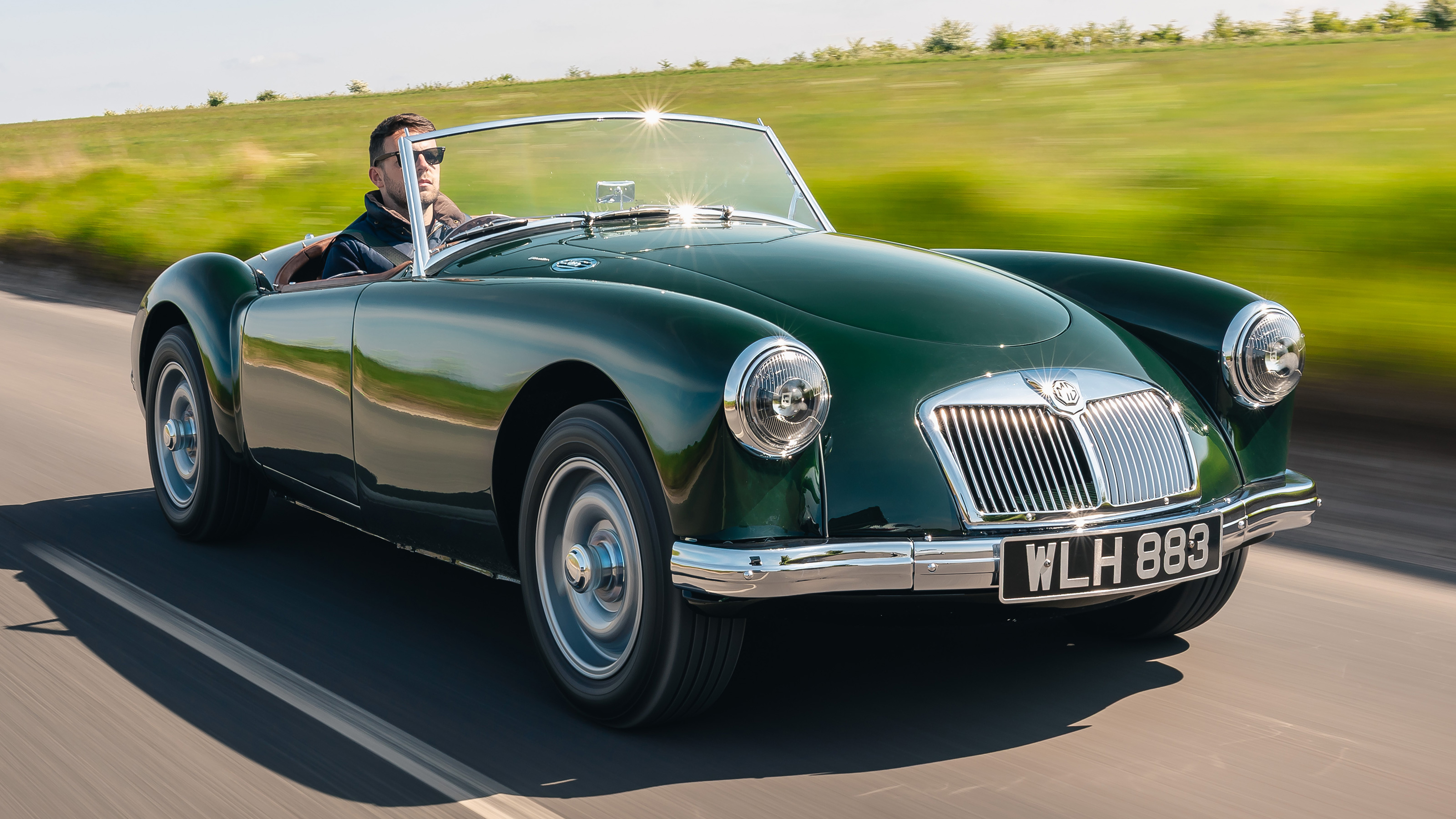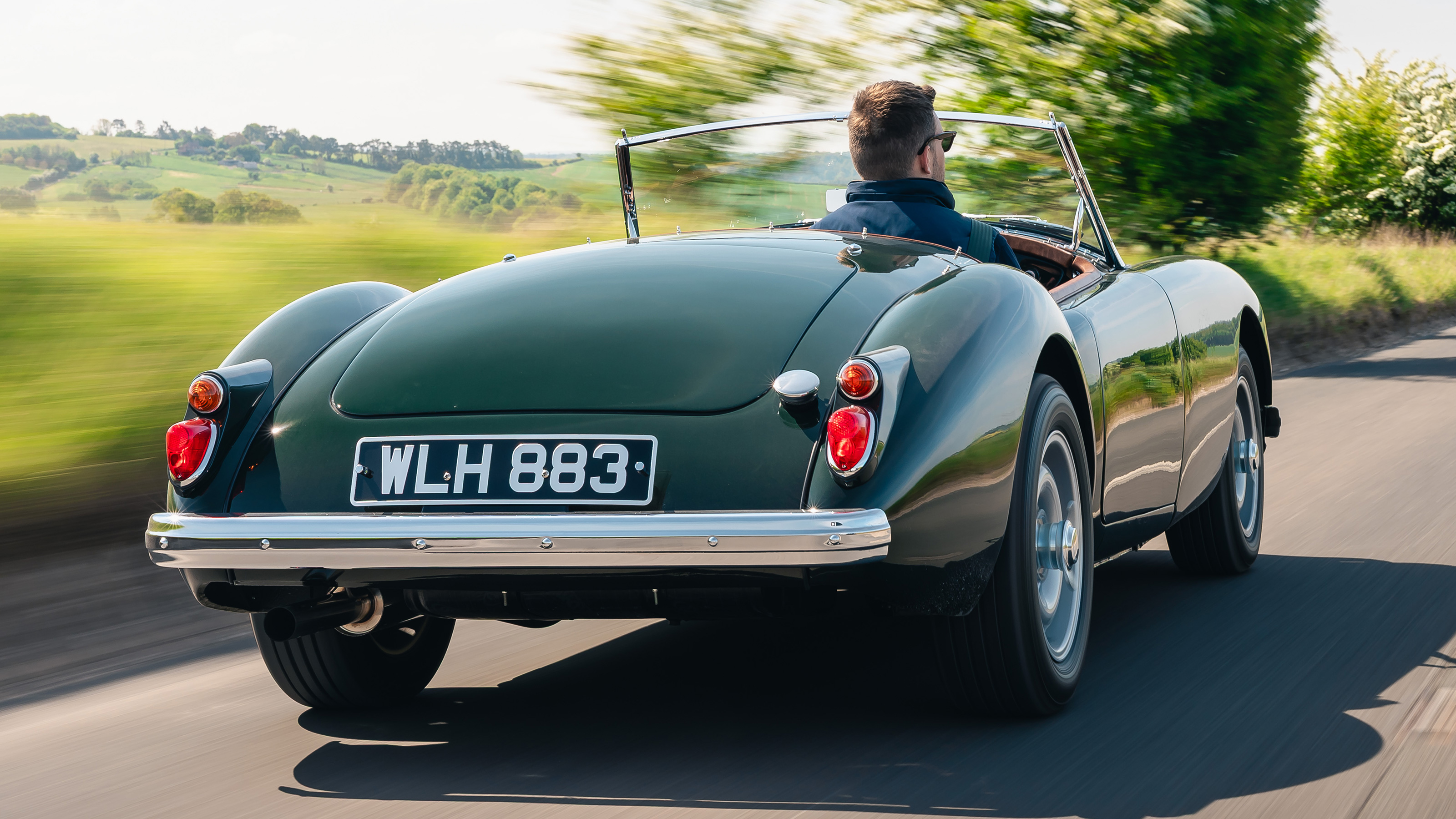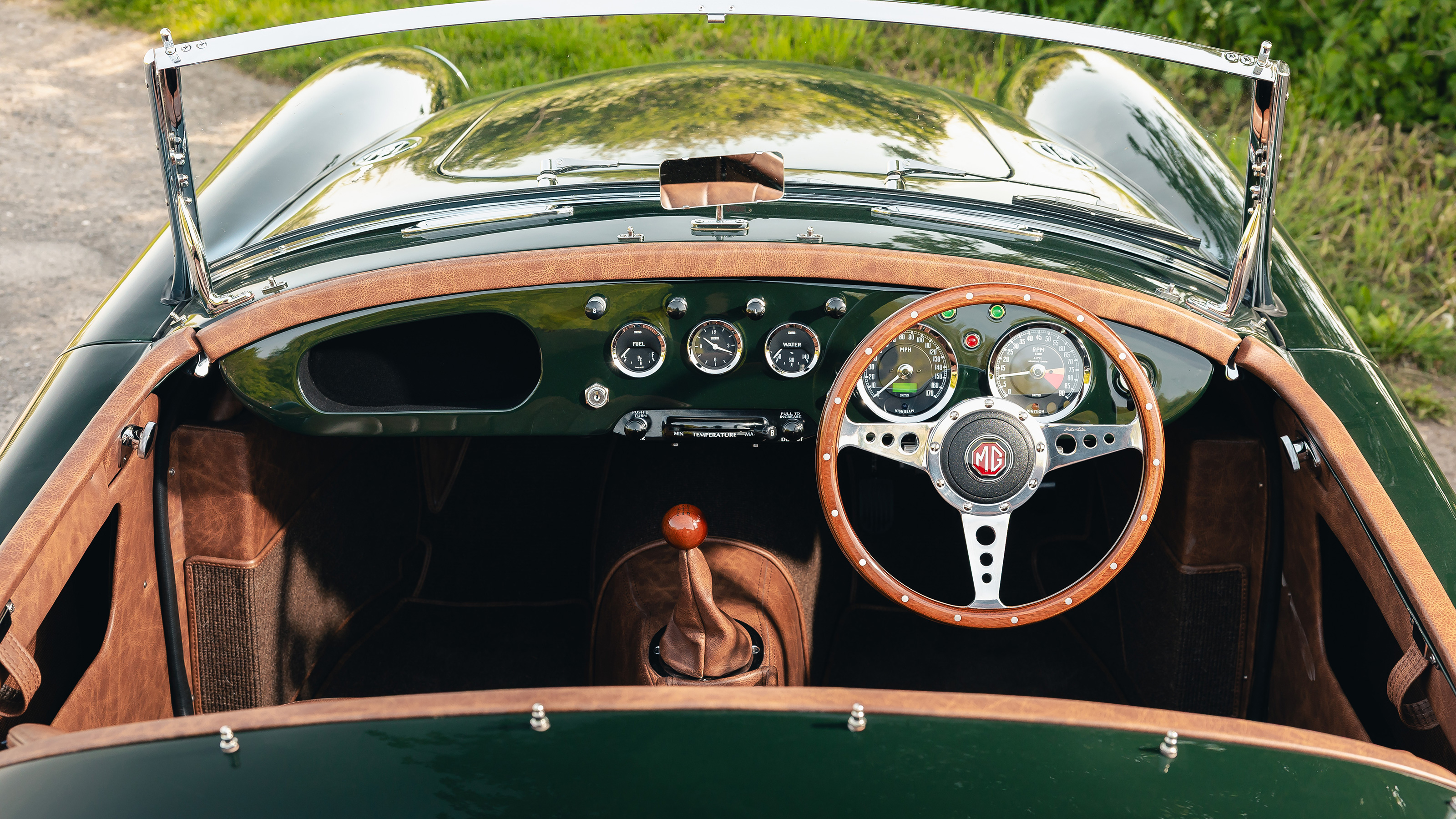
Frontline MGA review
Driving
What is it like to drive?
Hmm, what’s that strange and unfamiliar feeling we’re experiencing turning the little key? Ah yes – confidence. No fears that the MGA isn’t going to start. Or it’ll have somehow developed a misfire, a dicky hip and gout while it was parked. Turn the key, the engine answers with a fruity, promising thrum.
Yep, it sounds rortier than a 2.0-litre MX-5. It’s been treated to individual throttle bodies and fresh camshafts. It breathes out through a bespoke stainless steel exhaust. An MGA concours judge would probably smell a rat from the sound of the idle, but to your average fellow Sunday morning pootler, it’s just a healthy twin-cam. They’ll believe that right up until it disappears up the road like a greased weasel.
Is it fast?
Do we need to redefine ‘fast’? By modern electric SUV standards, no, it isn’t objectively ballistic. But 225bhp in a circa-900kg bathtub (meaning north of 270bhp per tonne) is always going to feel pretty meaty. Frontline claims it’ll get from 0-60mph in just 4.8 seconds and vroom all the way to 155mph.
Speccing the high-powered Duratec powerplant drops the 0-60 time to 4.1 seconds, making it easily a match for a careless Boxster or Z4. And where they’re slap-slap-slapping over catseyes and brushing the hedgerows, the MGA flits unimpeded. So narrow, so threadable, with the tiny screen pillars melting into your peripheral vision. Ignore the numbers – when you’re this low and this exposed, 30mph feels fast.
You’re busy with the gearbox, which is a delight. The change is fairly lightweight but never vague. It loves a well-timed throttle blip on the downchange too. You know where this is going: you feel involved, and integral to how well the car’s performing. It’s not difficult to drive, but it also never feels like it’s doing anything for you. Brakes are progressive and don’t snatch into a lock-up when stamped on.
Does it handle like a modern car?
That wasn’t the intention here – otherwise Frontline would’ve supplied road-roller semi-slicks instead of 15in Continental rubber with a juicy sidewall. No, the game here – as with all Frontlines – is to make the car MG’s engineers wanted to make back in the 1950s or 1960s, without the constraints of post-war austerity and pre-historic suspension.
In our short test drive we didn’t have the time to really explore the limits, but there’s no doubt that unnerving wheel-tucking roll oversteer inherent in so many cars of the period has been ironed out, leaving behind a more trustworthy chassis riding on five-link rear suspension. There’s huge adjustability on offer through tweaks to alignment and camber, not to mention the full suite of Nitron damper set-up changes to sink your teeth into.
As tested, it’s set up to breathe and flow with the road, old-school, rather than the modern tactic of using active anti roll bars and multi-mode dampers to batter the road into submission. No bad thing. B-road nirvana, in fact.
When you do clout a pothole, the Moto-Lita wheel quivers, but the chassis doesn’t. There’s considerably less flex about the MGA than a current MG Cyberster, believe it or not.
Featured







